USD $5,995 | GBP £4,725 | EUR €5,200 | AUD $9,170 | CAD $8,200
I think most of you know about Luxman, they are a Japanese company that manufactures luxury audio components. They have come to be well-respected in the audio industry for how well-engineered their products are. I just got my hands on my first ever Luxman product, the L-505Z integrated amplifier, and it’s safe to say I was very excited to review this.
Luxman doesn’t update its product line every few years; its previous generation of audio gear was in stock and running for about 15 years. The new Luxman L-505Z was launched this year. It is the entry-level amplifier in the new Luxman Z series, and it brings a wide variety of new features and technology. It offers 100 watts per channel into 8 ohms, and up to 150 watts per channel into 4 ohms. After two weeks of extensive testing, I genuinely believe the L-505Z could be the best amplifier under $6000 in 2025.
| Model | Luxman L‑505Z |
|---|---|
| Type | Integrated amplifier with MM/MC phono stage |
| Power Output | 100 W + 100 W (8 Ω) / 150 W + 150 W (4 Ω) |
| Power Transformer | 540 VA EI‑type |
| Filter Capacitors | 4 × 10,000 μF |
| Amplifier Circuit | LIFES 1.0, bipolar parallel push‑pull |
| Attenuator | LECUA, 88‑step electronic volume control |
| Frequency Response | PHONO: 20 Hz–20 kHz ±0.5 dB; LINE: 20 Hz–100 kHz –3 dB |
| THD + Noise | ≤ 0.009 % (8 Ω, 1 kHz); ≤ 0.09 % (8 Ω, 20 Hz–20 kHz) |
| S/N Ratio | MM: ≥ 87 dB; MC: ≥ 70 dB; LINE: ≥ 104 dB (IHF‑A) |
| Damping Factor | 200 |
| Inputs | 4 × RCA line, 1 × XLR, Phono MM/MC, Headphones 4.4 mm & 6.3 mm |
| Outputs | 2 × Speaker, Pre‑out, Sub‑out |
| Display | VU meters + 7‑segment LED volume level |
| Dimensions | 440 × 178 × 454 mm |
| Weight | 22.5 kg |
| Power Consumption | 330 W (operational), 90 W (no signal), 0.5 W (standby) |
| Price | USD $5,995 |
Luxman L-505Z Design and Build Quality
The Luxman L-505Z has an Aluminum chassis and it weighs 22.5 kgs, or 49.5 lbs. This weight is probably due to the big transformer and circuitry inside. The chassis was designed to reduce vibrations that could interfere with sound quality, and this results in a cleaner presentation of sound.
Like Luxman’s larger models, the L-505Z has two needle-type VU meters. These backlit meters are the strongest visual components of this integrated amplifier, and they smoothly follow changes in the music signal, which were very interesting to watch when I was playing music. A 7-segment LED display sits between the two meters, and it displays the volume level of the track or media you are playing.
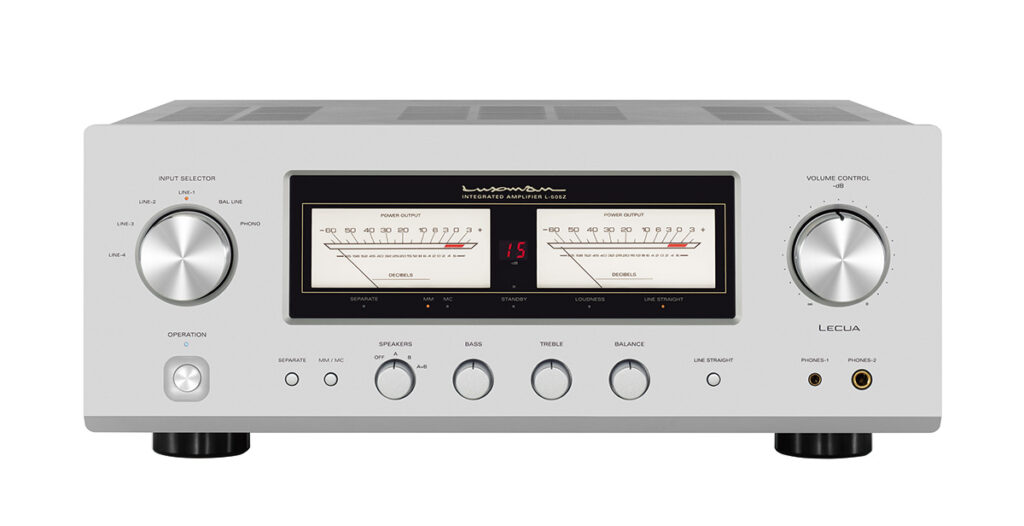
There are two large knobs on either sides of the front panel, one for input selection, and one for volume control. There are four smaller rotary dials below the meters for bass, treble, speaker terminal selection, and channel balance. The thickness of the front panel and the aluminum finishing on the knobs reassured me of the amazing build quality, and this is a product that will last you a long time, we’re talking more than a decade.
Luxman L-505Z Features and Connectivity
Connectivity Options
On the front panel, the Luxman L-505Z has 4.4mm balanced and the standard 6.3mm jacks for headphone users. On the rear panel, there are two sets of speaker binding posts, RCA connections for the phono stage, and four line-level inputs. The preamplifier outputs can be attached to another amplifier if you’re running a bi-amp configuration, there is a subwoofer out, and an XLR port. There is a phono stage inside the L-505Z, and it supports both moving magnet and moving coil cartridges.
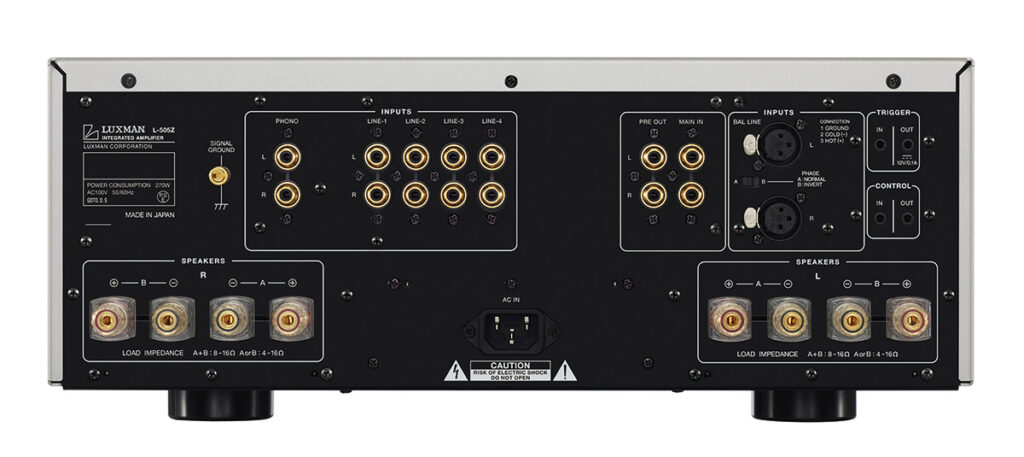
LIFES Amplification Feedback Engine
LIFES, or the Luxman Integration Feedback Engine System, is a complete redesign of Luxman’s ODNF feedback circuitry, which was used in the previous generation. LIFES is why there is a new Luxman Z series, and it is also used in the L-509Z and the L-507Z.
Luxman reduced the number of parallel elements in this new engine, which creates a shorter signal path and reduces distortion during amplification to less than half. The output stage uses a parallel push-pull configuration with bipolar transistor elements, achieving ample Class AB power of 100W+100W (8Ω) and 150W+150W (4Ω).
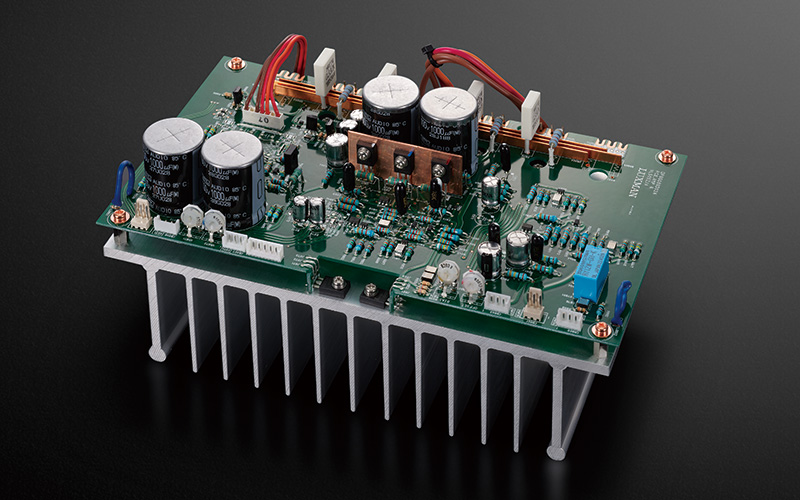
LECUA
This is Luxman’s new electronically controlled attenuator. This is essentially a computerized volume control that minimizes variations in audio quality and enables smooth and detailed volume adjustment over 88 steps. This gives you better linearity and less signal degradation than your traditional potentiometer volume control.
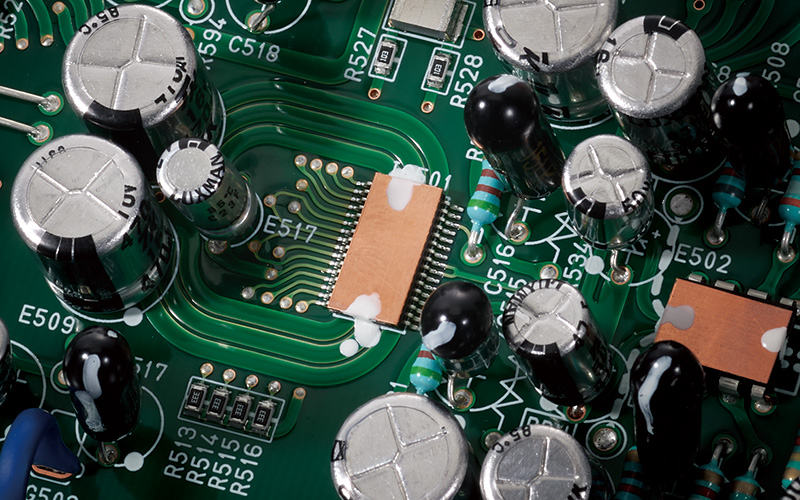
Power Supply
The L-505Z is equipped with Luxman’s traditional, highly stable, 540VA large-capacity, EI-type power transformer, combined with four custom-made 10,000μF filter capacitors. Most of the amplifiers you’ll see today use toroidal transformers, this is because they are more compact and efficient. An EI transformer, like in the Luxman L-505Z, is more durable, which is probably the only reason Luxman and other Japanese companies use it.
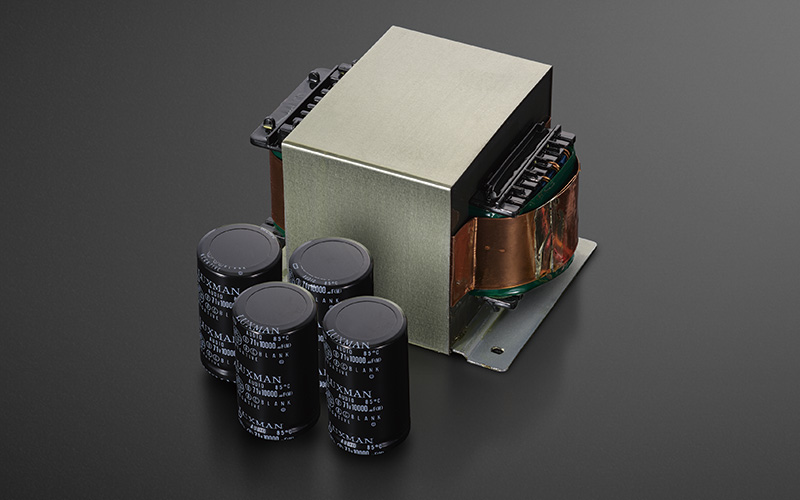
Luxman L-505Z Sound Quality
I used the Luxman L-505Z with my Bowers & Wilkins 801 D4 Signature speakers. Since the Luxman doesn’t have a DAC or a network streamer, I also connected the Grimm MU2 to my system.
The Luxman L-505Z delivers what can best be described as refined transparency with just the right amount of musical warmth. After extensive testing across multiple genres and listening scenarios, the amplifier consistently demonstrated an exceptional ability to get out of the way of the music while maintaining control and authority over any speaker pairing. The L-505Z’s sound signature is characterized by remarkable clarity and resolution without ever feeling cold, striking an excellent balance between detail and musical engagement.
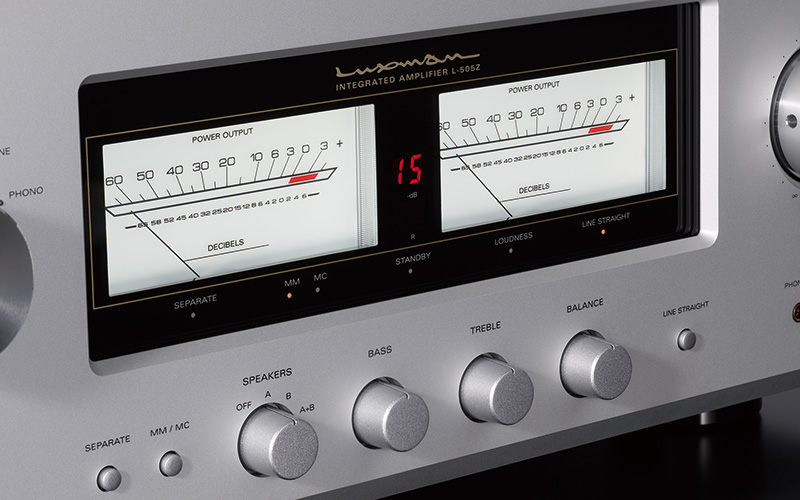
Testing the amplifier with Eva Cassidy’s “What a Wonderful World” revealed the L-505Z’s exceptional handling of vocal reproduction and tonal balance. Cassidy’s delicate phrasing and the subtle interplay between piano and guitar in the opening moments came through with stunning clarity, each instrument occupying its own distinct space in the soundstage. The LIFES amplification technology delivers on its promise of reduced distortion, allowing every nuance of her voice to emerge naturally without any sense of artificial enhancement or coloration. When the drums enter, the L-505Z demonstrates its ability to handle dynamic transitions seamlessly, maintaining composure while revealing the textural details that make this recording so captivating for audio testing.
Leonard Cohen’s “You Want It Darker” pushed the amplifier into different territory, testing its ability to reproduce the deep, almost gruff tones of Cohen’s baritone voice. The L-505Z handled the challenging lower midrange frequencies with remarkable authority, never allowing Cohen’s distinctive vocal timbre to become muddy or indistinct. The choir passages that open the track showcased the amplifier’s exceptional staging ability, with voices spreading naturally across the horizontal plane while maintaining perfect separation from the speakers themselves. The percussive bass and kick drum playing in unison demonstrated the bipolar parallel push-pull output stage’s ability to deliver tight, fast bass response while retaining the rich harmonic content that gives these low-frequency elements their full impact.
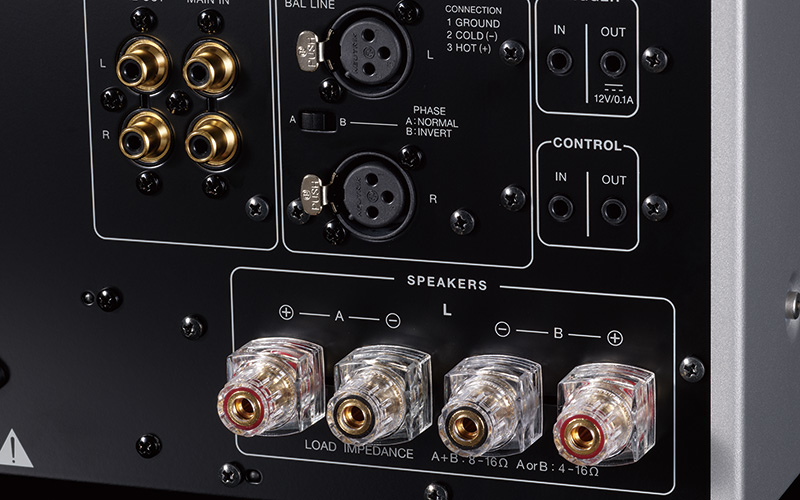
The amplifier truly showed its mettle with complex orchestral material like Saint-Saens’ “Danse Macabre”, where the 1958 recording’s incredible dynamic range and instrumental variety put every aspect of the L-505Z through its paces. From the delicate pizzicato harp strings to the challenging double bass solo in the introduction, the amplifier revealed subtle details with remarkable precision. The tonal balance remained neutral throughout, allowing the distinct timbres of strings, woodwinds, brass, and percussion to emerge with natural character. When the piece builds to full orchestral crescendos, the L-505Z maintained perfect composure, never showing signs of strain or compression even during the most demanding passages. The soundstage expanded well beyond the physical boundaries of the speakers, creating that magical disappearing act that transforms a stereo system into a window to the original performance space.
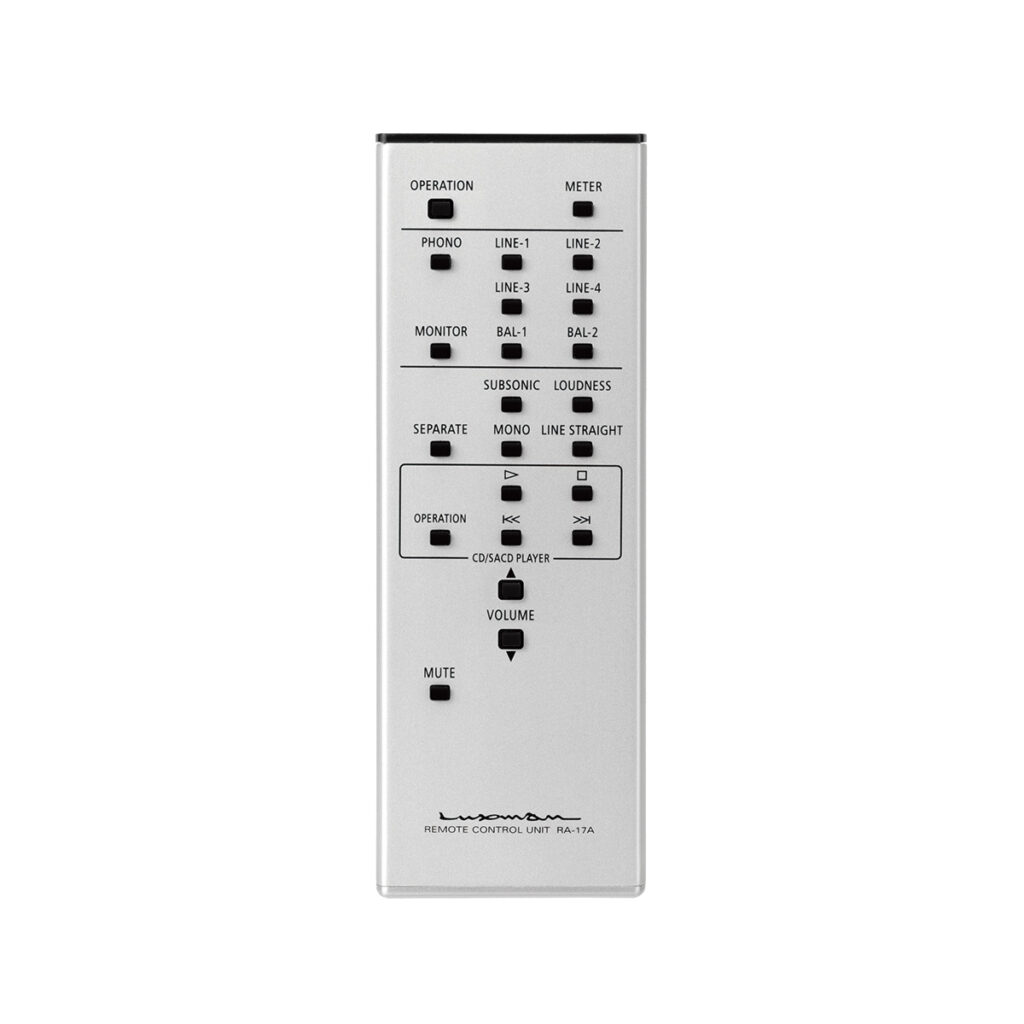
Contemporary material like Paul Simon’s “Diamonds on the Soles of Her Shoes” highlighted the amplifier’s versatility with modern production techniques and layered arrangements. The L-505Z parsed through the complex mix effortlessly, maintaining separation between Simon’s vocals and the rich tapestry of backing instruments while preserving the rhythmic drive that makes this track so compelling. The bass lines remained tight and controlled without becoming overly analytical, providing the perfect foundation for the intricate interplay of acoustic and electric elements. Every percussion detail, from subtle shakers to prominent drum hits, emerged with proper weight and timing, demonstrating the amplifier’s excellent transient response and dynamic control.
Throughout all testing scenarios, the L-505Z consistently punched well above its 100-watt power rating, feeling more like a much more powerful amplifier thanks to its exceptional current delivery and control. The EI transformer and substantial filter capacitance provide rock-solid power delivery that translates into effortless dynamic swings and unwavering composure regardless of speaker load or musical demands.
Verdict: Should You Buy The Luxman L-505Z?
The Luxman L-505Z represents everything that makes Japanese high-end audio special: meticulous engineering, exceptional build quality, and a sound signature that prioritizes musical truth over artificial enhancement. At $5,995, it’s undeniably expensive, but the combination of features, performance, and that intangible Luxman magic makes it a compelling choice for serious music lovers.
This amplifier excels when you want your components to disappear and let the music speak for itself. The L-505Z doesn’t impose its character on recordings; instead, it reveals what’s there with remarkable clarity and naturalness. If you’re building a system around analog sources, the integrated MM/MC phono stage is genuinely excellent and saves you from needing a separate unit.
The L-505Z makes the most sense for listeners who value refinement and longevity, quality over quantity, and long-term satisfaction. It’s the kind of amplifier you buy once and keep for decades, knowing it will continue to reveal new details in familiar recordings while maintaining that effortless, engaging presentation that makes listening sessions a genuine pleasure.
For those seeking maximum bang for the buck or the latest digital features, there are more practical choices. But if you want an integrated amplifier that combines classic Japanese craftsmanship with modern engineering refinement, the L-505Z deserves serious consideration, and it tops my list for the best amplifier under $6000.
Pros
- Refined and transparent sound with natural musicality
- Exceptional build quality with a solid aluminum chassis
- LIFES feedback engine reduces distortion dramatically
- LECUA attenuator offers precise volume control with no signal loss
- Supports both MM and MC phono cartridges
- Powerful output with strong current delivery and dynamic control
- Iconic VU meters and minimal design aesthetic
Cons
- No digital inputs or built-in DAC, analog only
- Heavy and large, not ideal for smaller setups
- Premium price tag for an entry-level Luxman model
- No streaming support or smart features
